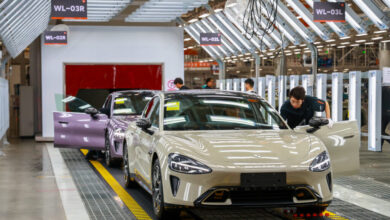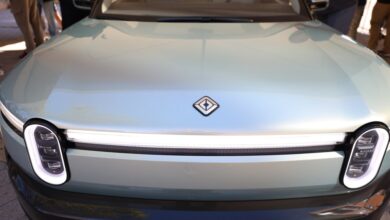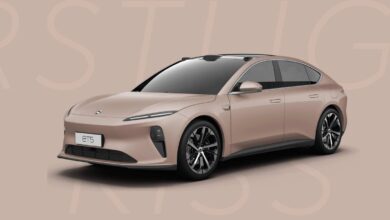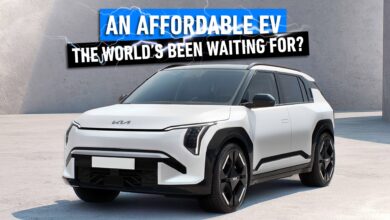Busting the Myth That an EV Can Be Meaningfully DC Fast Charged While Using a Bathroom or Grabbing Lunch

Electric vehicle market share has leveled off at around 7% of new vehicle purchases in the United States. It’s been this way now for about five business quarters. 93% of new car buyers don’t buy EVs. One reason that is often cited for this low take rate now that EVs are piling up on dealer lots everywhere, ready for immediate delivery at steep discounts, is that public charging is a hassle. On one hand, the nEVers say that “public charging is impractical and unreliable,” and on the other hand, the EVangelists say that one can energize an EV “in the same time as a bathroom break.” Both are mostly wrong, and this story won’t choose a side but simply provide a real-world example of how long it takes to energize a modern battery-electric vehicle at a modern DC fast charging station.
Here is a summary of our findings explained in the full text of the story:
1) DC Fast charging an EV takes dramatically longer than fueling up a hybrid with gasoline.
2) One cannot add meaningful range to an EV in the time it takes to use a restroom.
3) One cannot “fill up” an EV at a DCFC the time it takes to grab lunch.
4) Charging at a DCFC costs roughly double the cost per mile to power a hybrid with gas.
We charged at Acton Ford in Metro West Boston. This dealership, from the owner to the sales and service teams, is all-in on EVs. We interviewed the owner and general manager and have spoken to multiple salespeople and service team members. These are smart folks motivated to sell EVs. The surrounding towns include some that are quite affluent and decidedly green—the kinds of towns that vote at town meetings on whether to ban gas-powered leaf blowers.
According to our best estimates, Acton Ford has just invested seven figures in adding a long line of DC Fast chargers and over a dozen Level 2 charging points. They also landscaped the area around the new chargers and paved the lot. There is a sign posted out front asking EV owners to stop in and try the public chargers, which are managed for billing purposes by both Ford and ChargePoint. The DC Fast charger we used is rated at 120 kW according to its screen, a fact we also confirmed via ChargePoint.
Our Test EV For This Example
For our DC fast charging test, we used a new 2024 Nissan Ariya Platinum + e-Force AWD crossover. It has a total consumer cost of $55,580 before dealer doc fees. The Ariya was launched last year and has only been on sale for about 15 months. It is a current-generation battery-electric vehicle, and its price puts it squarely in the luxury realm.
We like the Nissan Ariya very much. It is great to drive, with ample torque and a quick throttle response in all situations. It feels roomy, and it has a modern look inside and out. This is our second time testing an Ariya, and we like it more with every passing day. The price seems higher than what we would pay for a five-passenger crossover, but it is significantly less than the first Ariya we tested, which topped $60K.
The Ariya is not the fastest DC-charging BEV on sale today, and it is far from the slowest. With its ability to accept 130 kW of power, it falls around average. A Chevy Bolt can only accept about 50 kW, and a Hyundai Ioniq 5 can accept 350 kW of energy—if the charger can output that amount. We have yet to find one that could in our travels.
When we parked our Nissan Ariya at the ChargePoint DC station, we observed a 69% state of charge (SOC), and the car’s mileage estimator read 216 miles of range. The vehicle’s HVAC system was set to auto, and it was about 80 degrees F outside. We arrived at 12:36 pm to charge and started our time after parking and exiting the vehicle. We used our ChargePoint account and tapped the phone on the screen to begin charging. All went as it normally does, and energy began flowing almost immediately. It takes about 15 seconds for the car-to-charger handshake to happen.
Once charging was underway, we walked a couple of hundred yards to a coffee shop chain during the lunch hour period. We then used the bathroom. After we scrubbed our hands clean as a surgeon’s, we waited in line to order lunch. I opted to have a healthy, balanced meal consisting of a coconut donut and an egg and cheese sandwich on an English muffin. I also ordered a regular-sized latte. Following a short wait, I sat and ate the food and drank most of the latte. While I did so, I monitored the state of charge using the ChargePoint app. The rate of energy input seemed consistent. It did not slow down meaningfully when the car reached 80% SOC, the typical stopping point for polite public charging. In fact, the rate seemed quite fast to me since I normally charge at home on an L2 charger. When finished, I used the bathroom and washed up a second time for the purposes of this test, not because I needed to. Finally, I walked back to the charger.
When we returned to the vehicle at 12:53 pm, it was still all alone at the DC Fast chargers. No cars had been there when we arrived. This means there was no chance we received anything but the full 120 kW charge rate. The SOC had risen to 85%, and the mileage estimator had risen to 269 miles.
Here is the charging test summary:
– Time to DC Fast Charge = 17 minutes
– Battery capacity added = 15.57 kWh
– Total SOC gain = 16%
– Total Estimated Range Gain = 53 miles
– Total Cost = $ 8.56
– Cost Per mile for energy = $0.16/m (That is crazy-high, by the way)
DC Fast Charing Conclusions
Based on our real-world test, it is obvious that charging a vehicle using DC fast charging is nothing at all like fueling up a gasoline-powered green car such as a hybrid-electric vehicle. I’ve been recording the time spent at gas stations since we purchased our 2024 Venza, and the vehicle can add roughly 500 miles of range in under 4 minutes at any gas pump we opt to try. By contrast, the DC fast charger would take about 170 minutes to input that amount of range to an EV.
Another observation is that stopping to use the bathroom (twice) and have lunch is not nearly enough time to add meaningful range back to a modern battery-electric vehicle such as the Nissan Ariya. 53 miles is better than nothing, but it’s only about 1/6th of the total range of the vehicle. A good hour and a half would be needed to fill the Ariya from about 10% to about 80% state of charge. This is Nissan’s official estimate, and it matches up with our observation as well.
Faster Cars At Faster Chargers Would Be Faster
We have the Nissan Ariya this week as a media test vehicle, so we used it. However, if we had used a vehicle with a significantly faster charge time, such as the Hyundai Ioniq 5, our charge rate would not have been faster at Acton Ford’s ChargePoint DC Fast charger. That’s because the Hyundai would still only be charging at a rate of 120 kW – the maximum rate the charger can provide.
Similarly, if we had taken the Ariya to one of the mythical 350 kW DC fast chargers every EV advocate uses in every example of super-fast charging, it would not have charged meaningfully faster since it can only accept 130 kW.
Now, if we had an Ioniq 5 and had used the fastest charger possible, the charging rate would have been roughly triple the rate we charged at. Would it be as fast as using a gas pump? Not even close. Would it have added more charge while we used the bathroom and had lunch? Sure.
Be wary of specifications and claims by EV advocates that try to imply you can add meaningful range to a battery-electric vehicle in the time it takes to “Use the bathroom” or “Grab a quick lunch.” While under perfect circumstances, it may be possible to add meaningful range using those times, in the real world, using a modern EV and a brand-new DC Fast charger, our experience is that the amount of charge added while taking a break for lunch and to answer the call of nature is meaningless. Powering up an EV from about empty to about full takes dramatically longer than fueling a hybrid-electric vehicle. By our best estimate, one could add roughly 2,000 miles of range to a hybrid-electric vehicle in the same time it takes to add about 50 miles to an EV. One last point. Charging at a DC Fast charger is an extremely expensive way to power up a green vehicle. Our Venza, which has a nearly identical interior volume to the Ariya, costs us about nine cents per mile to fuel with gas. By contrast, the Ariya costs about sixteen cents per mile to power at a DC fast charger.
If you’d like to add a comment under this story, please note that our comments section has returned and is in bold red at the bottom of the page.
John Goreham is an experienced New England Motor Press Association member and expert vehicle tester. John completed an engineering program with a focus on electric vehicles, followed by two decades of work in high-tech, biopharma, and the automotive supply chain before becoming a news contributor. In addition to his eleven years of work at Torque News, John has published thousands of articles and reviews at American news outlets. He is known for offering unfiltered opinions on vehicle topics. You can connect with John on Linkedin and follow his work at our X channel. Please note that stories carrying John’s by-line are never AI-generated, but he does employ Grammarly grammar and punctuation software when proofreading.







